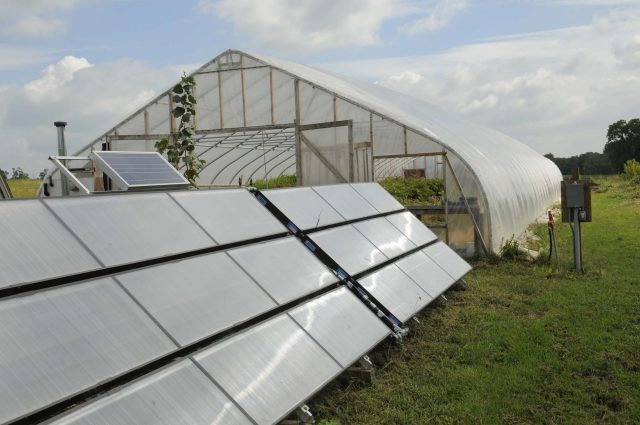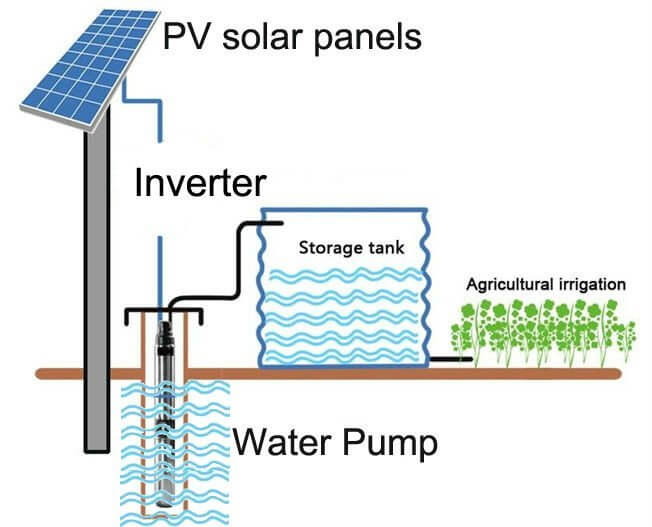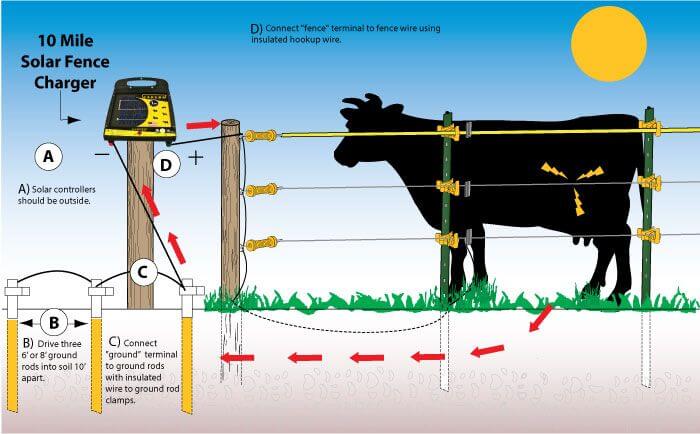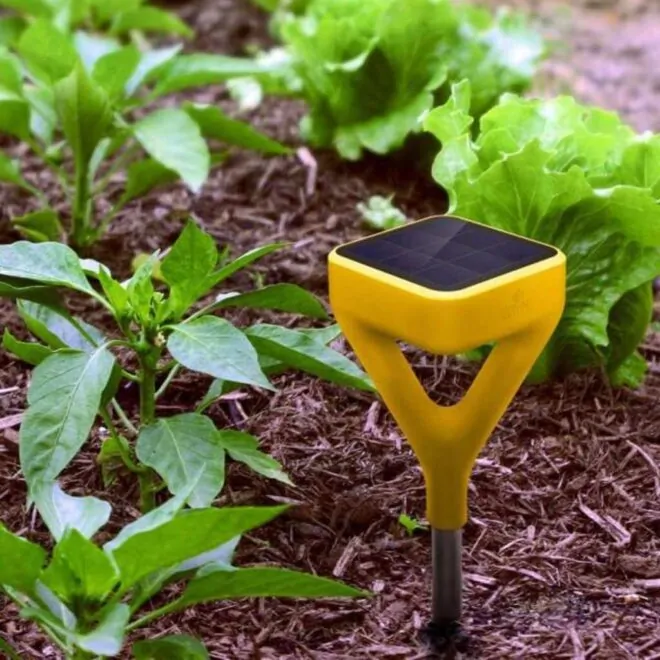This article was updated on June 08, 2023
Agriculture is the greatest testing ground for solar energy solution
With endless possibilities to come up with new developments that solve the contamination issues created by this industry as well as any products produced on a farm.
The operational costs of handling a horticultural operation can be lowered to levels that farmers can’t even to imagine.
Producers of dairy products, as well as poultry or meat, can also participate in these initiatives to make the sun their primary source of energy.
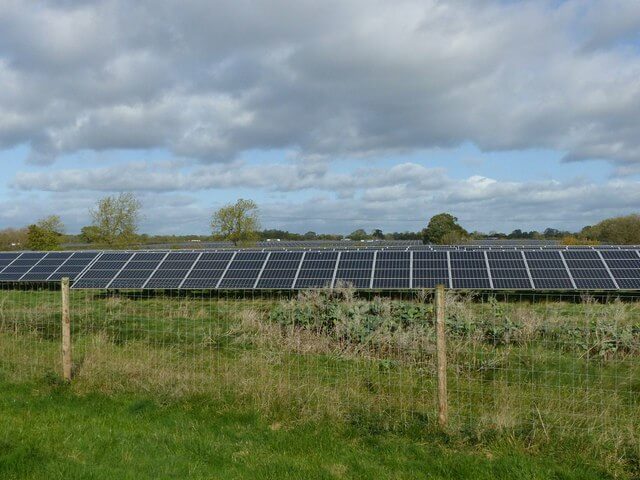
How can we Use Solar-Powered Technology at a Farm?
There is a lot of ways to implement photovoltaic systems in agriculture and horticulture.
The most well-known methods so far seem to aim for the use of the technology to store energy to handle specific tasks, such as organizing light distribution for particular crop rows on closed spaces.
There are also quite a few projects that include the redesigning of buildings used to handle after-harvest procedures to make proper use of the sunlight they receive to keep working non-stop, or even to handle irrigation pumps.
The investment done in this tech pursues an increase in productivity.
What are the benefits of Using Solar Energy in a Farm?
Saving money is always a great benefit, and that’s something that solar energy allows in spades.
While the budget to have a full farm running on photovoltaic systems will look high on paper at first, the farm will be set with free and clean energy for life once the costs of the installation are covered.
Not only production will be cleaner, but the farmer can also do away with any unexpected expenses or price hikes generated by energy companies of regular electrical grids.
Not to mention the fact that maintenance for these systems run at much lower rates that keep your electrical wiring working at all moments.
What Kind of Farming Operations is Using This Technology?
While the farming industry across the planet is slowly turning their heads to green alternatives such as the ones offered by solar panels, there are a few well-established players that have been working with these options for years.
Many greenhouse nurseries in diverse regions of the world allow farmers to have year-round crops and product to sell.
Other farmers prefer to use photovoltaic panels to dry crops quickly, especially for products that are sold on a dry, raw estate.
If the harvests need certain humidity conditions for storage purposes, solar panels can provide power to water heaters to make sure everything goes the way it should.
Is it Worth it to Stay Off the Grid as a Farmer?
The benefits of working outside of the grid are perceived after some time.
Certainly is advisable to keep an uneven distribution of power in your farm as you adapt to the new technology.
Although there are currently a lot of farms working entirely off the grid, most operations need to endure a time of transition to attain optimal conditions to run their operations with solar energy alone.
The good thing is that once the process is set farmers become less reliant on the old alternatives.
This can be a very positive, and a compelling alternative for towns in remote locations since installing a regular power grid on these can be quite problematic and not cost effective at all.
What Are the Alternatives Currently at the Disposal of Farmers?
Technology always has its own pace, but the undeniable fact is that something new comes up every day in every field, agriculture and horticulture activities are no exceptions when it comes to improvements.
Certainly, the operating costs of running a farm are high.
Fulfilling these expenses can become an uphill battle for many farmers. Solar strategies are there to help them cut costs and improve their capabilities as well as their self-reliance.
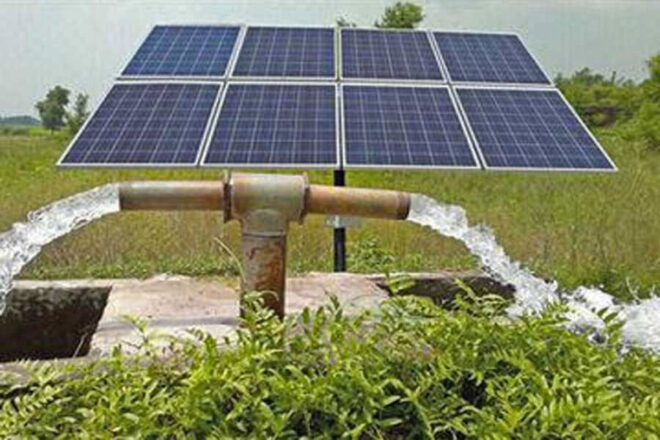
The good news for farmers who wish to embrace solar tech is that prices have been getting low as most people adopt this alternative. With that being said is important to remember as a farmer that even, if most of the information found online about the use of solar power is about generating electricity or heating water. There is also a number of alternatives that can allow any farm to harness the power of the sun to manage a number of unique tasks throughout the farm.
We present you with some of them:
-
Using Solar Power to Handle Irrigation
There are many water pumping systems powered by photovoltaic energy available in the market.
Framers can use this technology in remote locations where there are no active power lines to use electrical pumps and irrigate fields.
When it comes to performance, the overall take of the people using this irrigation system is how reliable can be as well as cost-effective.
Since it requires little maintenance, these pump systems can work year-round. The only drawback is the dependence of some systems on batteries to function properly.
Small pumps don’t need them, but large pumps may include them. More advanced options can consist of inverters or tracking mounts to locate the sun.
-
Using Solar-Powered Fence Chargers
This option is mostly reserved for farms that handle livestock since most of them require fencing solutions that work at their best at all moments to keep the animals in check.
An electrical fence powered by solar panels can work pretty well since they can be handled as modular paddocks or set for permanent installation.
Installing these fences is also pretty easy, and it has become one of the most cost-effective methods to keep livestock safe within the limits of the property.
-
Setting Solar-Powered Sensors
Information is crucial for a farmer, especially when it comes to his field of production. Getting reliable data on hand to be able to do their work each year is invaluable for them.
The data can provide a lot of reliable information for the optimal growth of crops or a more efficient irrigation schedule.
The process of finding and locating it’s also considered insufferable for many farmers.
Switching to solar-powered options is the most solid bet since they can be recharged daily on any given sunny day and they offer precise information as well as enhanced features when it comes to our options to retrieve them for maintenance purposes.
The applications for these sensors in agriculture are rather large since they help measuring on precipitation levels, soil moisture, or levels of sunlight.
If you are running a livestock farm, you will be able to track and monitor the behavior of your animals.
-
Solar Greenhouse Heating
Red numbers plague agriculture when it comes to practices that make our environment unhealthier.
The industry is still regarded as one of the most contaminating ones, just behind the energy sector by being the second most significant greenhouse emitter globally.
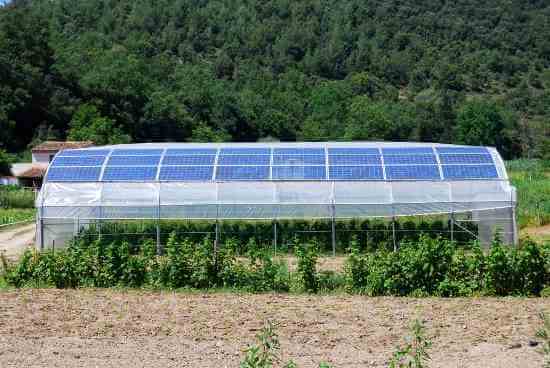
Regular farms equipped with greenhouses rely on oil heaters in to keep stable temperatures on their storage rooms.
With solar-powered greenhouses, we can store solar energy for days and retain the collected heat to be used at night.

